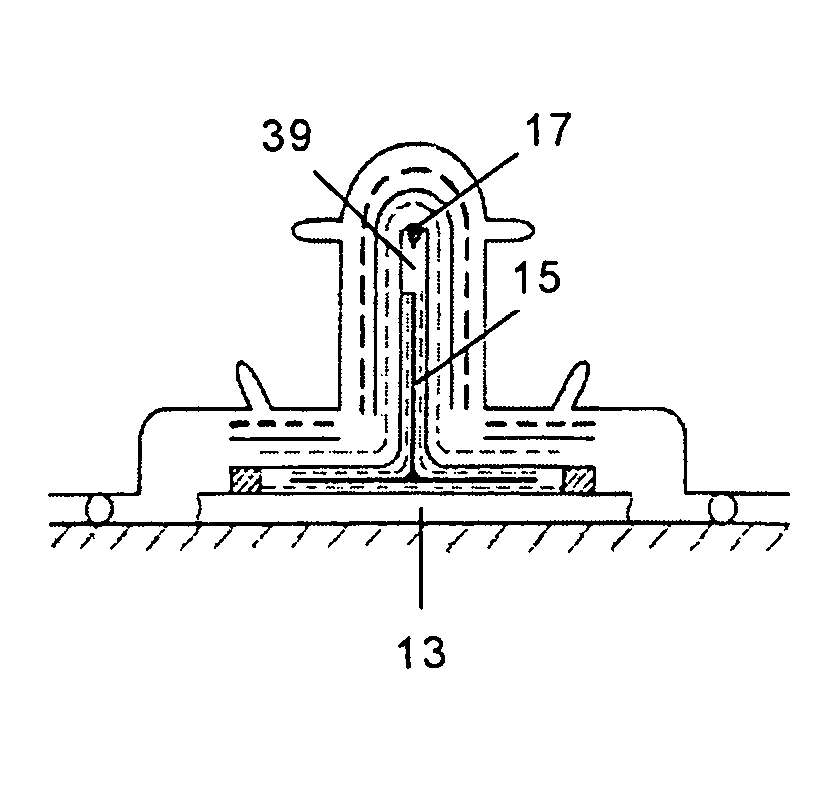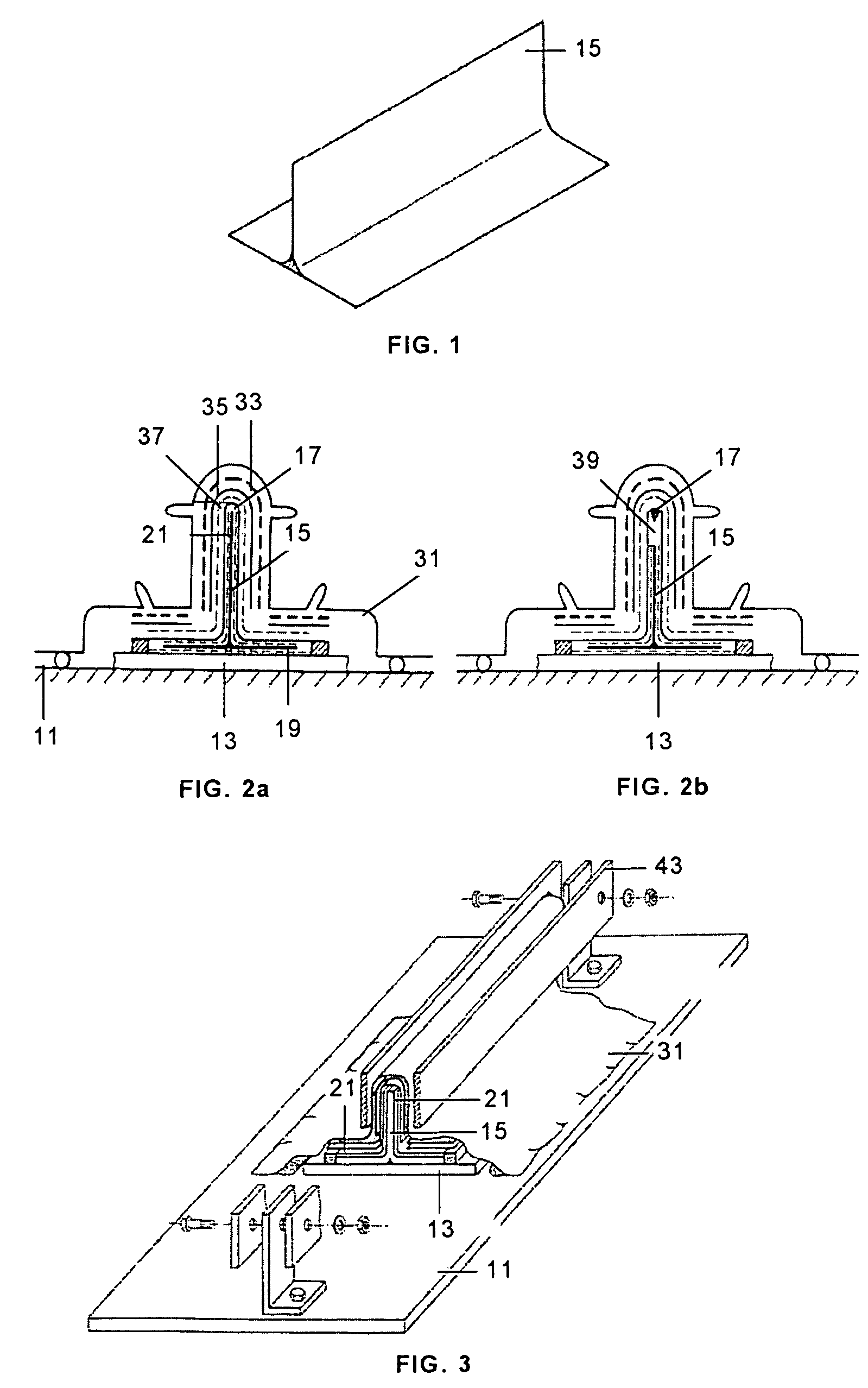Process of manufacturing composite structures with embedded precured tools
a composite structure and precured technology, applied in the field of composite structure manufacturing, can solve the problems of variable complexity level, increased final product weight, complex and therefore expensive and difficult to use tool system, etc., and achieve the effect of high integration level
- Summary
- Abstract
- Description
- Claims
- Application Information
AI Technical Summary
Benefits of technology
Problems solved by technology
Method used
Image
Examples
Embodiment Construction
[0023]The process of manufacturing composite structures according to the present invention is particularly applicable to the manufacture of planar or curved structures with T-, Ω- or H-shaped stiffeners, and described below is the case of a planar structure stiffened with T-shaped stringers.
[0024]A precured T-shaped component 15 (see FIG. 1) made of planar carbon fiber fabric preimpregnated with epoxy resin, with a thickness exceeding 0.4 mm is used as the tool that will remain built into the structure. The tool 15 can be continuous or discontinuous, depending on the shape of the final structure to be manufactured.
[0025]The process is carried out on a table 11 on which the planar structure 13, the first subcomponent of the structure, is arranged.
[0026]The tool 15 is positioned on the planar structure 13, being able to use an auxiliary means 19 between them, such as an adhesive film or layer of preimpregnated material. The tool 15 may require treatment prior to the bonding process pr...
PUM
| Property | Measurement | Unit |
|---|---|---|
| thickness | aaaaa | aaaaa |
| shape | aaaaa | aaaaa |
| pressure | aaaaa | aaaaa |
Abstract
Description
Claims
Application Information
 Login to View More
Login to View More - R&D
- Intellectual Property
- Life Sciences
- Materials
- Tech Scout
- Unparalleled Data Quality
- Higher Quality Content
- 60% Fewer Hallucinations
Browse by: Latest US Patents, China's latest patents, Technical Efficacy Thesaurus, Application Domain, Technology Topic, Popular Technical Reports.
© 2025 PatSnap. All rights reserved.Legal|Privacy policy|Modern Slavery Act Transparency Statement|Sitemap|About US| Contact US: help@patsnap.com


